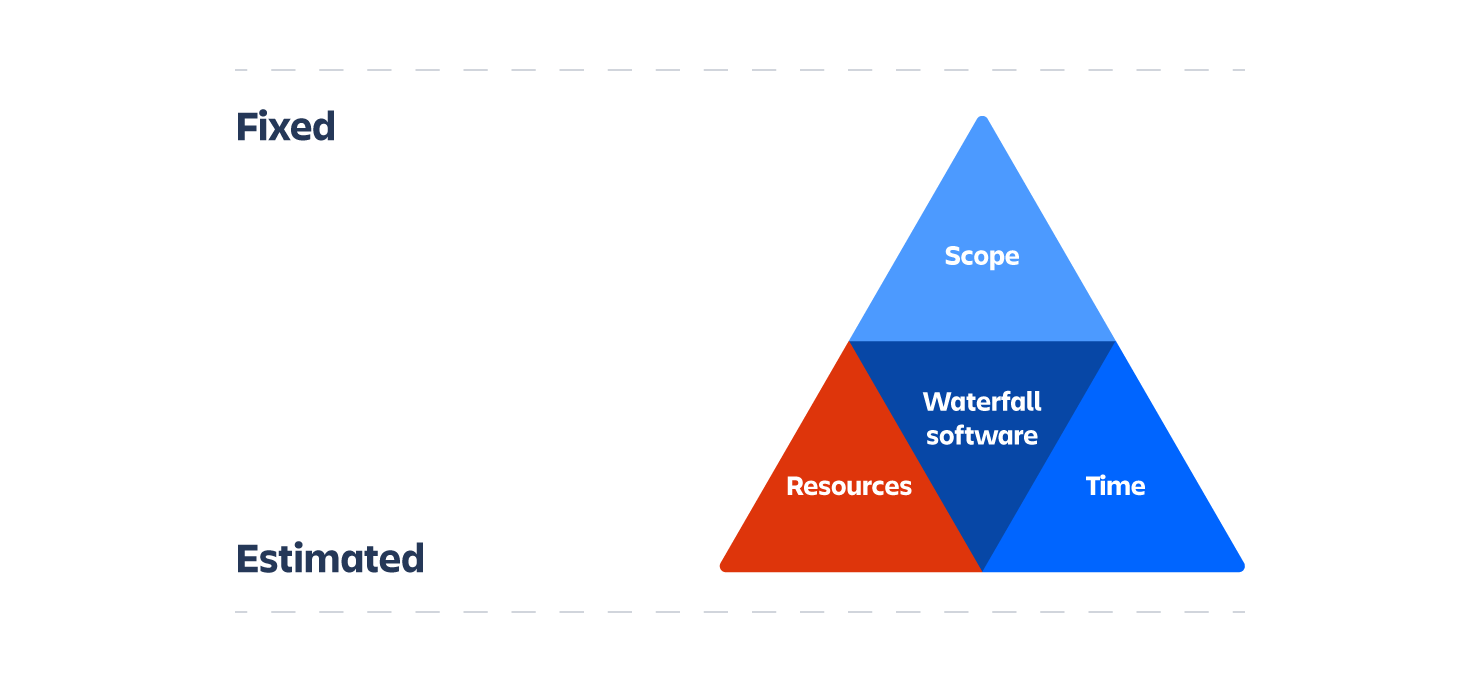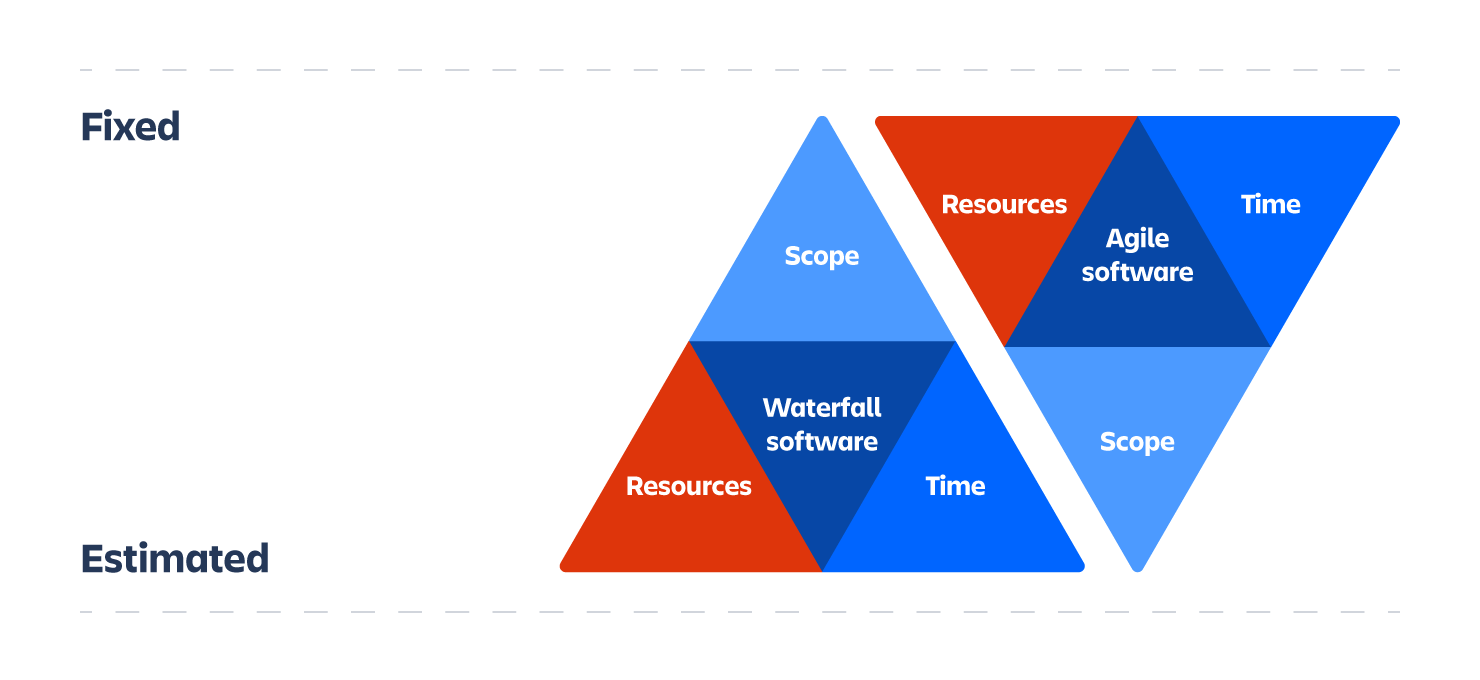All agile software projects have goals: what the project needs to deliver, when it needs to be delivered by and within what budget. However, managing these three constraints can be a complex juggling act. So let's take a cue from the decades-old iron project management triangle of planning and learn how balancing different variables can help agile software teams achieve agile project management nirvana.
What is the project management triangle?
The project management triangle also called the iron triangle, has constraints that are considered "iron" because you can't change one constraint without impacting the others. The original iron triangle project management, proposed by Dr. Martin Barnes in 1969, follows a waterfall approach to product development: scope is fixed and resources and time are variable. For a software team, this means that teams start a project by defining product requirements to determine a project's scope (a list of work items). The resources and schedule are variable and are estimated depending on the fixed scope.
- Scope is the work to be done – such as features and functionalities – to deliver a working product.
- Resources include budget and team members working to deliver and execute.
- Time is when teams will deliver to the market such as releases and milestones.
The purpose of the project triangle is to give product teams the necessary information to make trade-offs that will help the business. For example, if teams are faced with a fixed scope, they might be halfway through a project and realize that they won't hit their release date. The only variables they can play with are: 1) Time - they can accept a later release date or 2) Resources - they can add some more people to the project, which will increase costs. As software development evolved in the 21st century, the need for better collaboration and the ability to respond quickly to customer feedback became crucial, and thus, the agile methodology was born.

Mapping the project triangle to agile
If your team practices waterfall project management or are new to agile development, the important thing to remember is the difference between what is fixed and what is estimated. Unlike waterfall development, agile projects have a fixed schedule and resources while the scope varies. While the scope of a project might change in agile development, teams commit to fixed iterations of work: sprints if you're using a scrum framework and WIP limits if you're using a kanban framework. It's also a best practice to keep teams fixed throughout the development process. By keeping teams consistent on a product or project, they become more efficient through developed trust and continuity.

The idea of scope is the same in agile development: what software to build and deliver. However, agile focuses on high-level requirements rather than trying to come with deep and detailed requirements upfront. The scope of a project gets regularly managed and groomed (prioritized) by the product manager in a tool like Jira. The product manager decides which work should be accomplished in the next sprint based on agile qualitative and quantitative feedback from various channels (market conditions, customer feedback, competitions, etc..). And because resources and time are fixed, it's easier for development teams to react to market changes and to deliver value to customers faster. This transparency of constraints keeps teams honest about a consistent and fast release cadence, which is a key tenant of agile development; and by looking at projects through the lens of the project management triangle teams are able to adapt without abandoning a plan.
Agile planning and the project triangle
As projects become bigger, more teams are needed and the time box gets longer. Thus, the notion of fixing resources and time, while scope varies, is not a valid approach for all agile projects. Long-term agile planning requires a more flexible project management triangle that allows teams to plan ahead and ensures that they're meeting the business objectives. Think for instance about the lean startup movement, and the notion of a minimum viable product (MVP). An MVP by definition is a small set of features (scope) that delivers customer value. To get to that MVP, teams might need to stick to a fixed scope – the number of features – with time being their only variable (e.g. you can't release without certain features, so the release date gets pushed). Only after launching the MVP, teams switch to a variable scope.
Regardless of the differences between waterfall and agile development, when using the project triangle, there’s no right or wrong way. It's there to help you make the best decisions and trade-offs to reach your business goals. A tool like Timelines visualizes the building blocks of a plan – scope, people, and time – to help teams plan in real-time. You can easily play with scope, teams, and time to plan your next product release, using the team's existing data in Jira.
